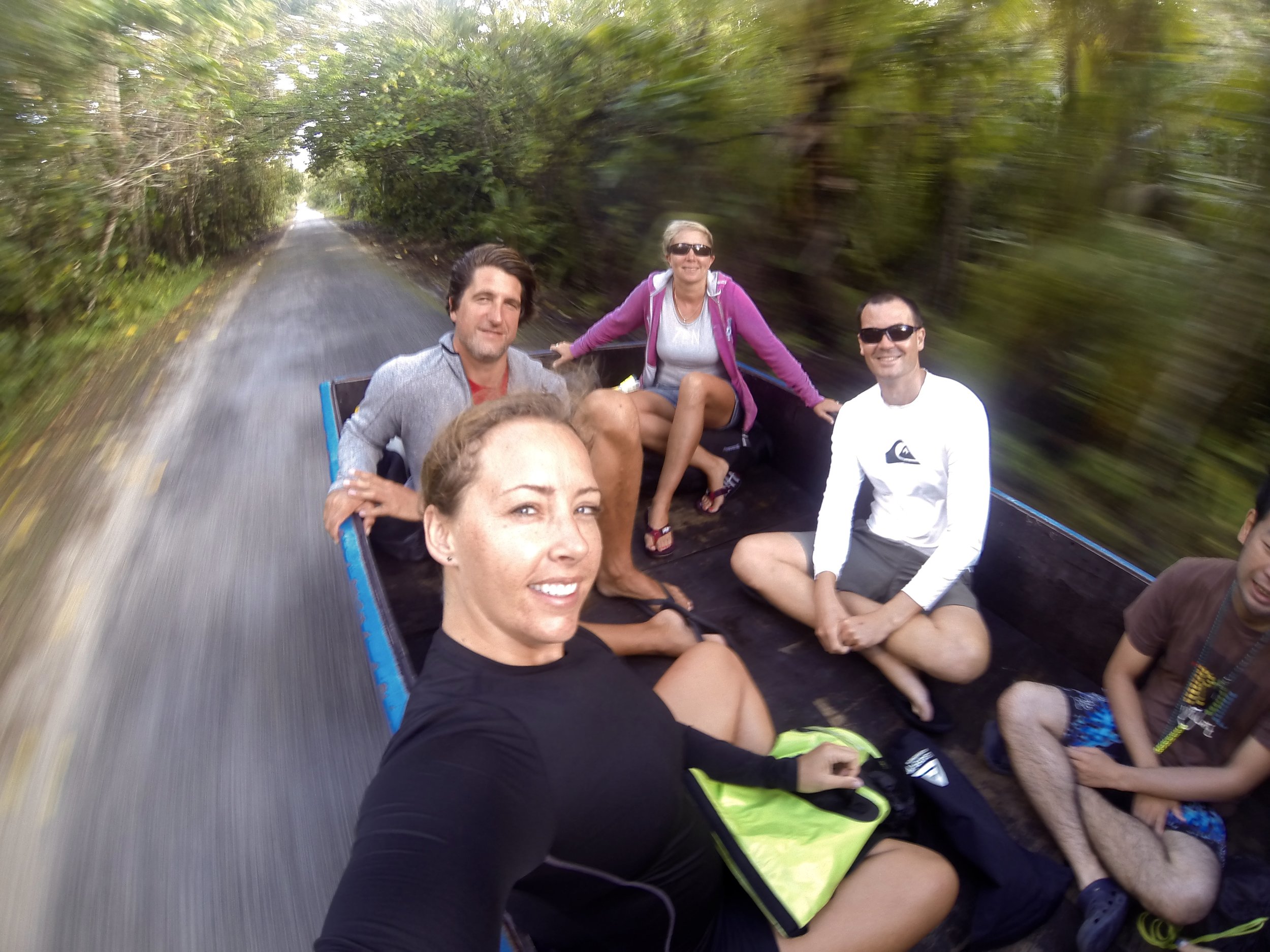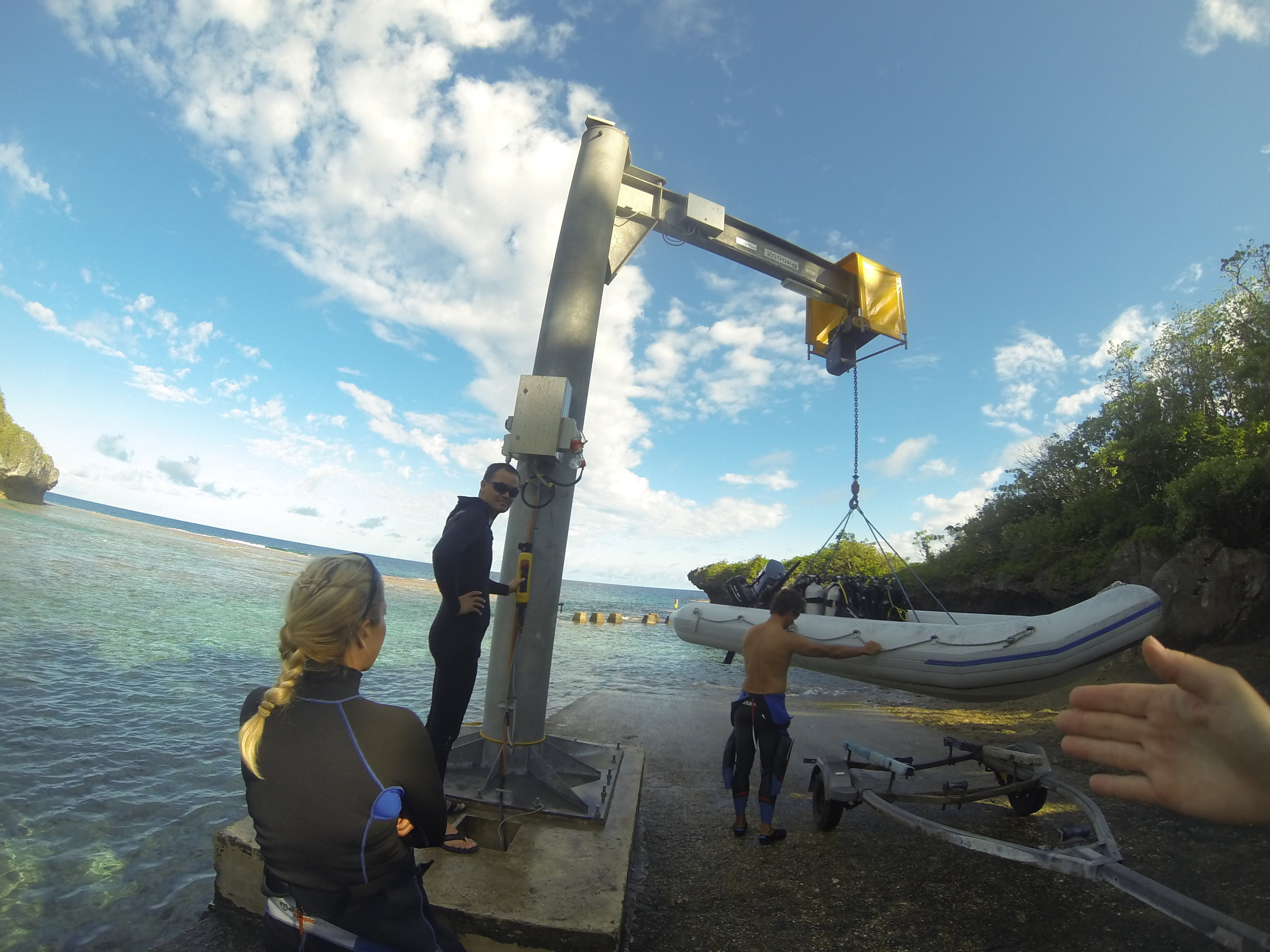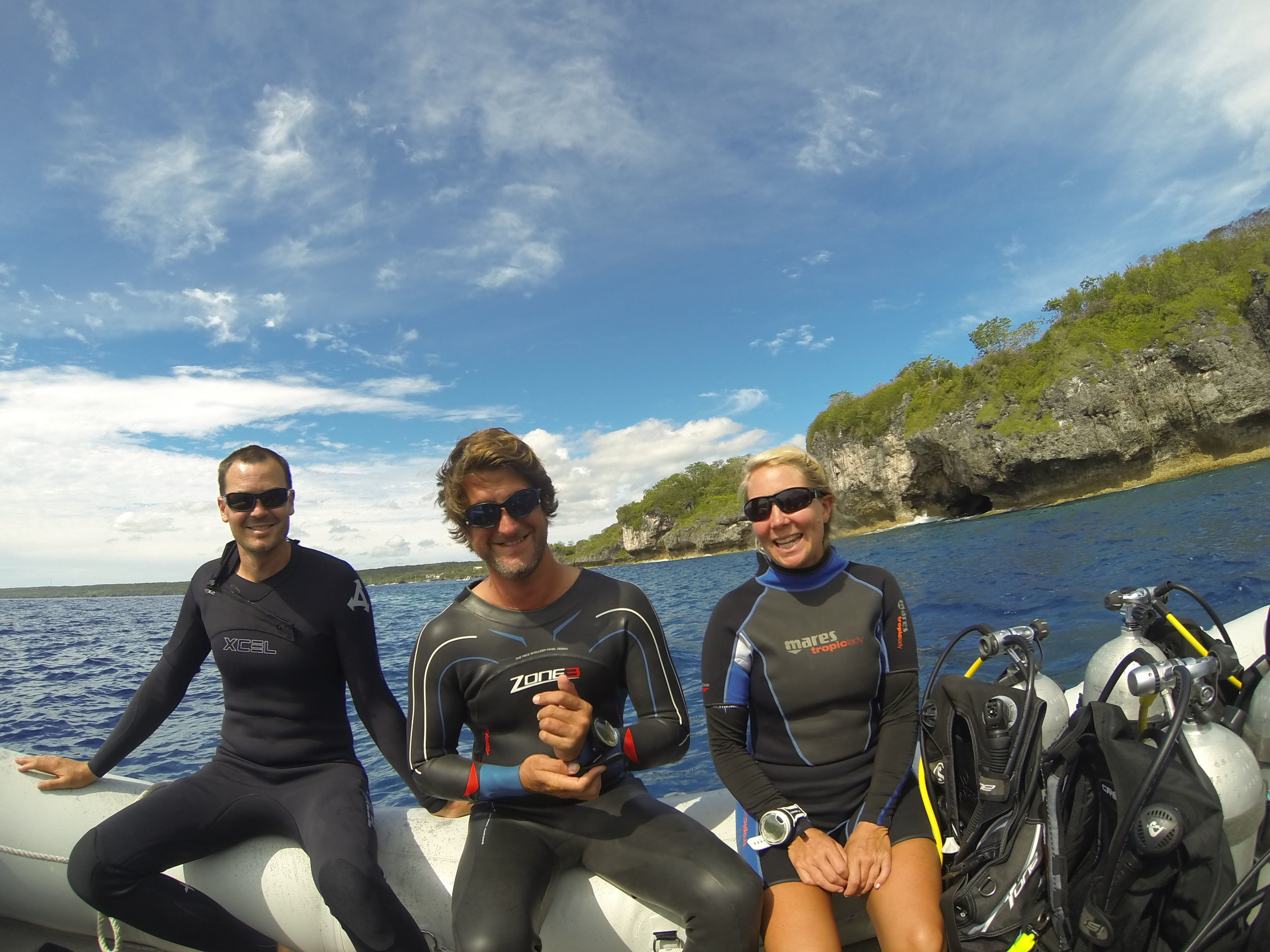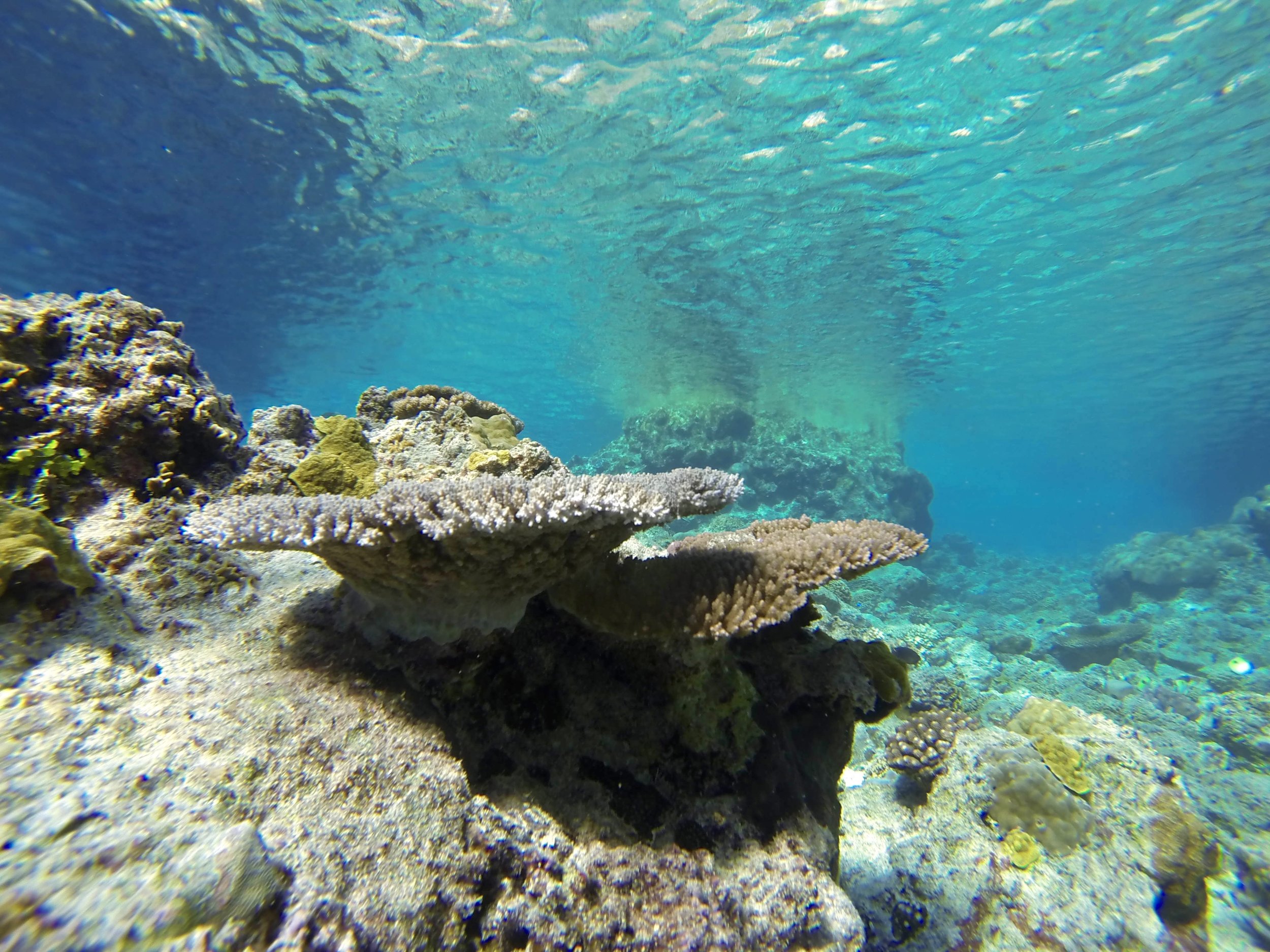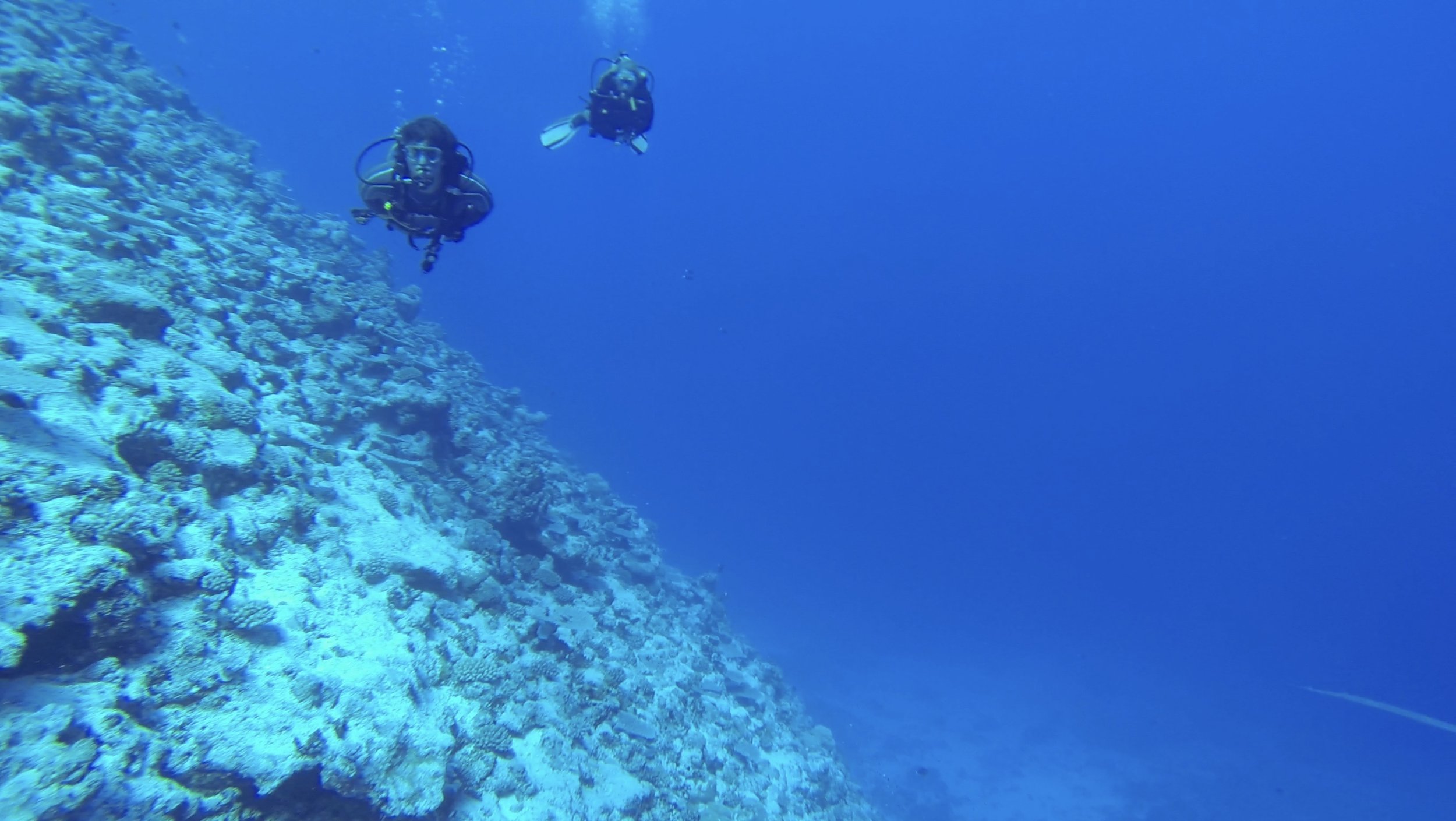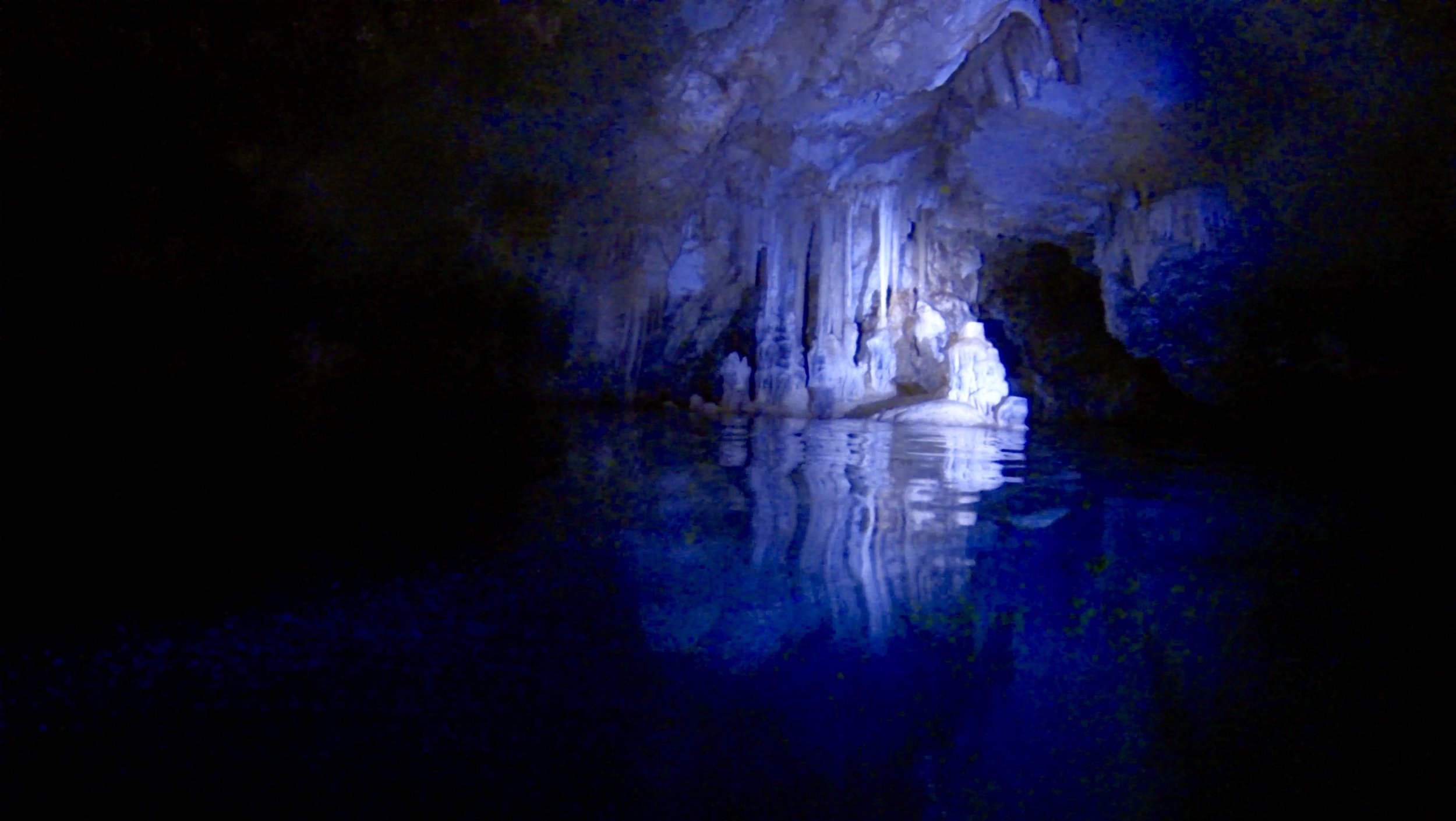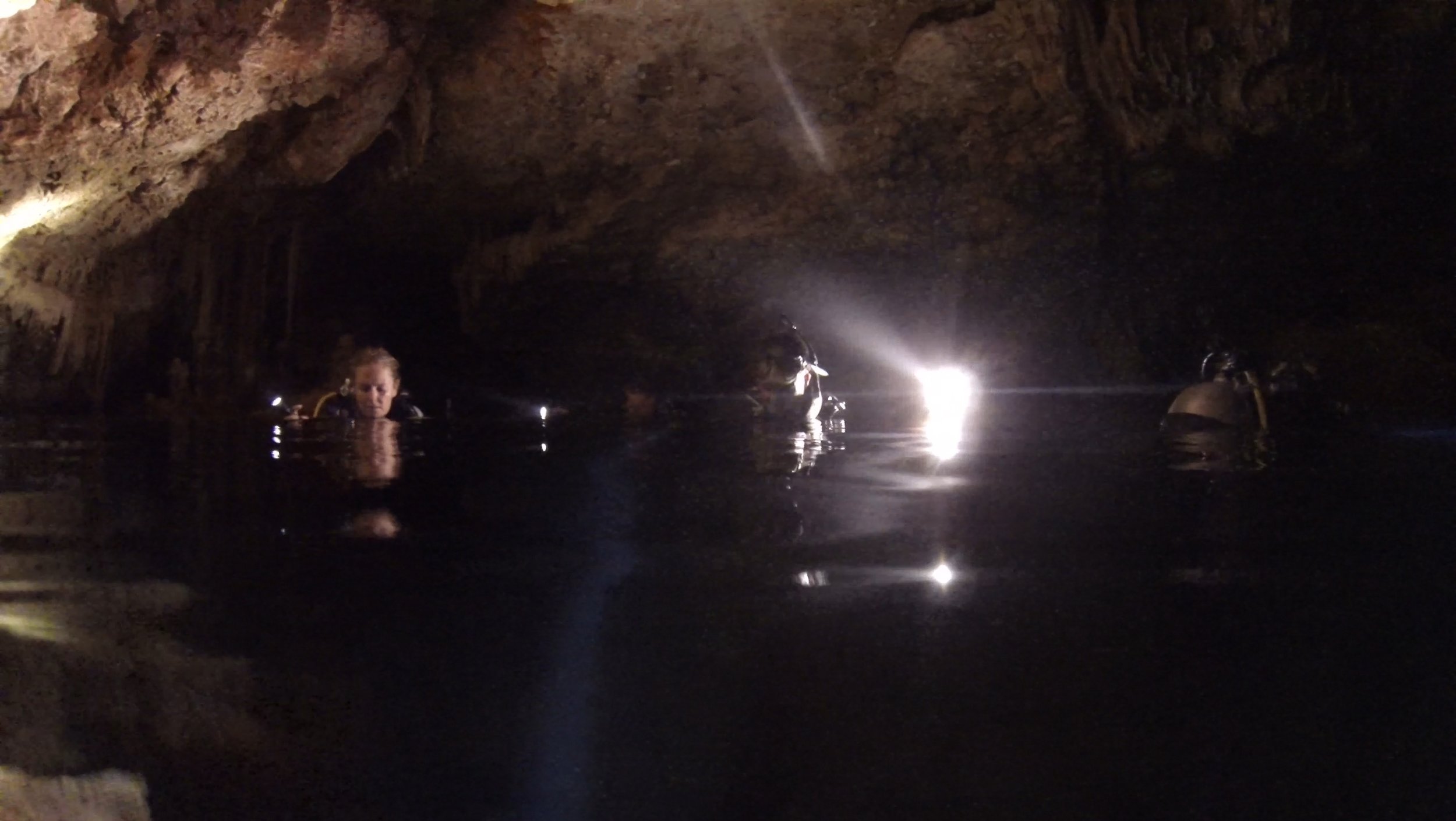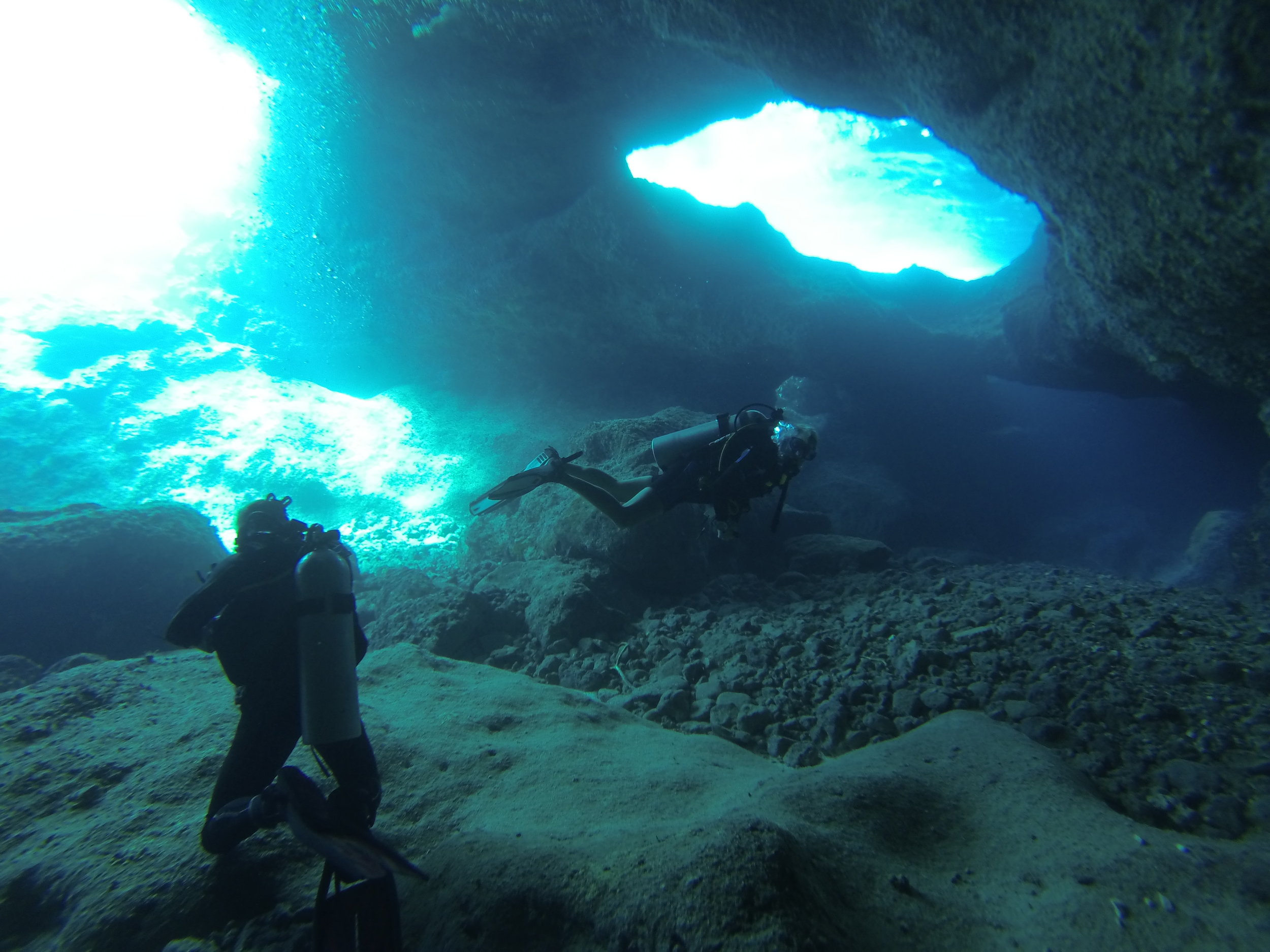We schedule some scuba the next day, and find the water is as clear and beautiful from 50 feet down, as it is from the surface. Fan coral, swim through caverns, caves, chimneys and deadly sea snakes are the highlights of Niue diving.
Andrew and I get so revved up about the clarity of the water and the challenge of the swim throughs that we decide to take advantage of a cheap certification deal and get our Advanced Open Water Diver ticket.
This means five dives each in which we focus on improving buoyancy control and air consumption, refresh best practices for how to dive to 100 feet (since we did that several times in Fakarava already), learn how to dive at night, learn how to navigate under water, and practice some stress and rescue situations. Imagine diving 100 feet down in water with 100 foot visibility. The feeling of being suspended in space is amplified as we could see at least 100 feet below us as well as the 100 feet above our heads. Playing with our buoyancy gave us plenty of time to float quietly and listen to a choir of dolphins singing around us.
Of all these, though, the night dive was the newest experience. We watched sunset as the instructor briefed us about the dive and quizzed us on the techniques we were learning. We hoist the dive gear onto our backs, waddle down the stairs, then step into our fins. Now, the only light around is the lamps installed on the wharf and the stars. We take one large step forward, and fall into the deep. We situate our masks, and ready ourselves. The gurgle of air leaving our BCD vests bubbles around us as we descend into darkness. We each have a waterproof flashlight (or torch as they all say here), so its easy to locate the group. Andrew’s beam swings to the right and we see the wall of the wharf. My beam swings to the left and we see reef. In front of us, nothing but 1000 foot ocean.
My hands clasped beneath my stomach, I find my buoyancy using my lungs as my rudder. Do I want to lift slightly higher to go up and over coral? I slowly intake more air. Do I want to sink lower to reach depth? I breath out a slow and steady hum. I swim forward using one relaxed frog kick. Then, I wait. Just like when I am at Sonrisa’s helm, every move I make has a delayed response. If I turn her rudder to the right, it takes a few seconds for the water to wash over it and create movement. I don’t use my arms or hands to swim at all, which is an odd feeling. I can almost just think up, down, right, left and if I wait a few seconds, my body will slowly adjust. I sip air, a three second intake of breath; then, I slowly blow out to at least a count of eight. I wait three seconds at the bottom of the breath, then I sip again. I feel calm.
They say that when a group of divers dive together, they will naturally breathe together. If one person begins to breathe very quickly, it is contagious and the other divers have a tendency to breathe quickly, too. I consciously breathe slowly, relax my body and move as little as necessary. It is like meditation, but with fantastic scenery.
My flashlight beam traces in front of me. All the bright blue sea urchins who usually tuck themselves into the crevices of the reef have climbed out and are waiving their spines around in the water. Everywhere, coral have sent out their ferns and fans, and like soft feathers in the wind, they wave forward and back in the surge. Snakes swim through my flashlight beam, and then I can’t see them anymore. I find an eel I have never seen before; he has alternating black and white along the length of its body, with a yellow green head. He is completely out of his hole, resting on the ocean floor. I see a Lion Fish, his fronds displayed in all their glory.
At one point in the dive, we hide the beam of our flashlights. We are in pitch darkness, but as the diver in front of me paddles his feet, the same bioluminescence that streams off Sonrisa as we sail along lights up from under the water. I am in the middle of the little green ocean fireflies.
By the time we surface, I feel like I have done a full hour’s yoga session. My mind is calm, my breathing slow, my body relaxed. It is the best feeling in the world. I am clearly developing an addiction here. That night, I dream of scuba diving.
We top off our training with the stress and rescue course. We explore a cavern swim through and reach a giant domed cave. As we surface inside the cave, we see the beautiful Niue stalagmite and stalactite formations resulting from water dripping through the coral sponge. We are inside Niue. A couple of Ugas hang from the side of the walls, their beady eyes looking at us as if we don’t belong in this dark echo chamber. We can see the bright blue water of the cave entrance below us, obscured by our ripples on the water surface.
We sink back down and swim through the cave entrance. As we get outside, the fun really begins. Our instructor swims over the top of me and tugs my mask out of place. It fills with water and blurs my vision. No biggie, I clear it. A few minutes later, he yanks Andrew’s regulator out of his mouth. Again, Andrew takes the device that provides him with oxygen and replaces it in his mouth. Our instructor gives me signals that his ears are not clearing properly and he starting to panic. I reach him, go through the process of calming him down, and he signals he is better. He “thanks” me, putting his two hands together, then —- yep, yanks out my regulator.
I’ve always thought I might freak out if I suddenly lost the object that provides me with air under water. But, to my surprise, I simply solved the problem. I found the regulator, and put it back in place. We go through several more stress scenarios like this, until at the end of the dive, he doesn’t just knock my goggles out of place, but steals them completely. Ok. So, we continue our slow ascent without panic and maintain our dignity.
Can this really be me? It was just over six months ago that I was tip toeing over the Mexican Death Warf hem-hawing about every tiny little threat to life and limb. Before we left, I imagined that I would handle whatever came my way. But, when we actually headed out to sea, I had my doubts about whether I could sustain my enjoyment of this process while “handling” things. Now, “handling things” is just a way of life, an every day experience of climbing industrial sized tires to reach my breakfast, changing sails at the approach of a squall, or maintaining my sanity when someone has stolen my diving goggles while under water. I enjoy the trust I am building in my self.


